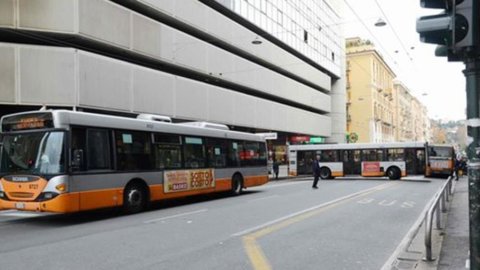The climate in Rome is increasingly incandescent. It's not just the heat and judicial inquiries that make Roman citizens gasp. Among the many headaches, the problem of the public transport in Rome, perennial thorn in the side for the Capitoline administration which no longer knows which hole to plug between the Atac accounts in deep red, the dilapidated and often broken means of transport, the perennial problem of the fight against ticketless and continuous users strikes.
And it is precisely the double strike on July 27th which predicts one black dot day. So much so that the Guarantee Commission officially asked the prefect for the precept of Atac drivers and train drivers.
In detail, it strike on Monday it concerns both public transport managed by Atac and that managed by Rome Tpl. Atac employees will cross arms 24 hours with the exception of the two guarantee bands (from the start of service to 8,30 and from 17 to 20). The agitation of Rome Tpl employees belonging to the Confederali, Ugl and Faisa Cisal trade unions will last four hours, from 8,30 to 12,30.
But the guarantor for strikes asked the prefect of the capital of to prescribe Atac drivers and train drivers, emphasizing that “the unrest “would come following a period characterized by delays, reductions in travel and disruptions occurred starting from 1 July 2015". For the Guarantor "the abstentions scheduled for 27 July 2015 would therefore lead to the real possibility of further serious and imminent damage to the ?protection of freedom of movement? of users of the Local Public Transport of the Municipality of Rome Capital, already strongly tested by the malfunctioning of the service and by the malfunctions mentioned above". A surprise blow, that of the guarantor who takes the side of Atac users who seem to pay the ticket more for the inefficiencies than for public transport in the city.
On this situation of serious dysfunction of the service, the "deep red" of the company accounts is then loaded: just yesterday the board of directors acknowledged that it affect the minimum capital entering the situation of article 2447 of the Civil Code (when the losses exceed one third of the capital and this is reduced below the legal limit). The day after tomorrow the financial situation of Atac as at 30 June will be approved and the directors will find themselves faced with the need to convene the assembly for the recapitalization. This operation is entirely borne by the sole shareholder, i.e. the Municipality of Rom. In order not to pass from article 2447 to article 2484 of the Civil Code, the one that indicates the dramatic dissolution of the company, the Municipality needs at least 200 million euros to recapitalize the company and save her for the skin of the cuff.
The city has always had an insufficiency in the local public transport report card. The inhabitants of Rome are almost 3 million but to these we must add the many commuters and non-resident workers who populate the many rental houses located throughout the Roman territory. A large part of these choose local public transport to move around the city. It seems like a sort of self-flagellation but with traffic often haywire, especially on consular roads, many prefer public transport rather than spending a good portion of their salary between fuel and car maintenance.
There are few public transport systems with a decent standard both in terms of the regularity of the number of trips and the quality of the journey to the destination. One of the few means of this type that comes to mind is the streetcar 8 which connects Piazza Venezia to Circonvallazione Gianicolense passing through Viale Trastevere but also the good 8 has worsened considerably in recent years.
As far as the worst of Atac is concerned… there is, using a play on words, an embarrassing choice. Do you prefer the 20-year-old convoys of metro B in the direction of Rebibbia, or the Rome-Viterbo line? And what about the Rome-Lido train that connects Ostia to Rome Piramide passing through Acilia and other towns in the Via del Mare area? We strongly advise against taking a ride on Metro A during peak hours these days (from 7,30 to 9,45 in the direction of Battistini and from 18 to 20 in the direction of Anagnina). Just yesterday the latest episode from other worlds with the assault by exasperated Termini users on the train driver who had just entered the station and was loaded with people like chickens in cages. In recent weeks, the Atac drivers, especially those of the subway, are under accusation because they would be implementing one white strike which brought the transport of the capital to its knees. Atac has opened a disciplinary proceedings for 50 metro drivers out of 300 in the workforce on charges of interruption of public service.
But why is the white strike of the Atac drivers underway?
From July XNUMX, the drivers of the Capitoline metro seem to have suddenly become inflexible, reporting small anomalies on the trains and in some cases, as we read in the Messaggero, recognizing problems on trains that were perfectly functional up to a few hours earlier. This trick is implemented before starting the race, when some test maneuvers are carried out to test the correct functioning of the trains. In the event of a train breakdown, the train moves from the subway tracks to the repair shop. Since July XNUMX, the number of broken trains on the two lines has increased abnormally and this has heavily penalized users of the Rome underground who have fewer rides available to move around the city. The rigor of the drivers in observing the regulation on the suitability of the trains for the public service started hand in hand with the new contract, which started on July XNUMXst, and which provides the obligation to stamp the tag with the electronic badge. A coincidence?





